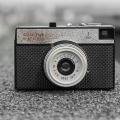This week we begin an occasional series which will focus on pictures of how different streets in the town looked before re-development began in the second half of the last century.
We begin with St Mary St. The street with that name today bears no resemblance to the original street, being the short, ubiquitous road which leads from the large roundabout at the bottom of Marlow Hill to the Swan theatre and car-park.
The original St Mary St did indeed begin at the bottom of Marlow Hill. It was demolished in 1962, to allow the large roundabout to be built and the area to be re-developed.
The street began at the junction with Queen Alexandra Rd, opposite what was until recently an office supplies superstore, but was originally a London Transport bus station for what were known as Green Line buses and coaches.
From the Queen Alexandra Rd junction the street ran for two hundred yards or so to link into Pauls Row and the Guildhall.
This is the western side of St Mary St shortly before it merges into Pauls Row. The large house on the extreme left is Shelburne House, later called The Gables, demolished like all the buildings in the street except the Royal British Legion. The site is now the location of the viaduct under the inner relief road, which provides pedestrian access to the university campus:

BFP_12/02/2021_27_Page leader BFP03395_08
Here we see a section of the eastern side of St Mary St, with the factory of furniture manufacturer’s Nichols & Janes in the foreground, with the Royal British Legion:

BFP_12/02/2021_27_Page leader BFP33547_08
This view of St Mary St was taken at the bottom of Marlow Hill looking towards the town centre and All Saints church. The building in the foreground, which is being demolished, is St Mary’s House, which in its last years had been used as administration offices for the hospital, 1962:

BFP_12/02/2021_27_Page leader NEW BFP05092_10
In this picture we see some of the members of the Royal British Legion and their children at their annual party at the Legion Hall in St Mary St, 1956:

BFP_12/02/2021_27_Page leader BFP71244_08
During WW2 the government set up communal kitchens to provide inexpensive meals to the poor and those who had been bombed out of their homes. These were called British Restaurants, Wycombe’s was in St Mary St. This was renamed the Civic Restaurant after the war. Here we see children in fancy dress at a Caledonian Society party in the Civic Restaurant, 1954:

BFP_12/02/2021_27_Page leader BFP68147_11







Comments: Our rules
We want our comments to be a lively and valuable part of our community - a place where readers can debate and engage with the most important local issues. The ability to comment on our stories is a privilege, not a right, however, and that privilege may be withdrawn if it is abused or misused.
Please report any comments that break our rules.
Read the rules hereLast Updated:
Report this comment Cancel